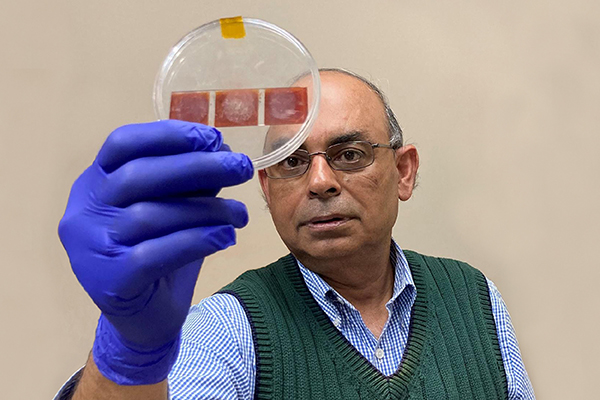News

Researcher to help U.S. Department of Homeland Security develop 3D fingerprint technology to improve crime-fighting
A University of Dayton researcher is working with the U.S. Department of Homeland Security to create a better fingerprint to help identify crime suspects thanks to a two-year $300,000 grant from the department's Criminal Investigations and Network Analysis Center.
"Fingerprints, which are 3D, are typically recorded in 2D photographs, but that may not deliver the most comprehensive picture," said project lead Partha Banerjee, director of the University of Dayton Holography and Metamaterials Lab, UD professor of electro-optics and photonics. "The science of fingerprints has been virtually unchanged since its debut more than a century ago in Calcutta, India. We will capture holograms of 3D fingerprints, which would open a new dimension in identifying criminals, as well as for identification for security. Hopefully 3D will be the new protocol for fingerprint analysis in the near future. That is why the U.S. Department of Homeland Security is so interested in this work."
Akhlesh Lakhtakia, professor of engineering science and mechanics at Penn State, will deposit fingerprints on glass, wood and plastic; age the fingerprints for each material in different environmental conditions; and finally coat the fingerprints with a special film. The fingerprints will be mailed to Banerjee’s lab to make digital holograms, which can be stored and reconstructed in 3D on a computer.
"Why store fingerprints as 2D objects? When you impress your fingers on a surface, the print you leave behind is a 3D object. It’s a ridge-and-valley structure, with ridges of oil or fat about a tenth of a millimeter tall. So why are we throwing away the potential of the third dimension?,” Lakhtakia said.
The Miami Valley Crime Lab will grade the quality of the fingerprints captured by Penn State and the University of Dayton's 3D reconstruction from holograms.
Banerjee owns one patent and has published six textbooks and more than 150 journal articles. He is a fellow, or a member of distinction, of OPTICA, formerly the Optical Society of America; SPIE, the International Society for Optics and Photonics; and the Institute of Physics.
For interviews, please contact Shawn Robinson, associate director of news and communications, at srobinson1@udayton.edu.
